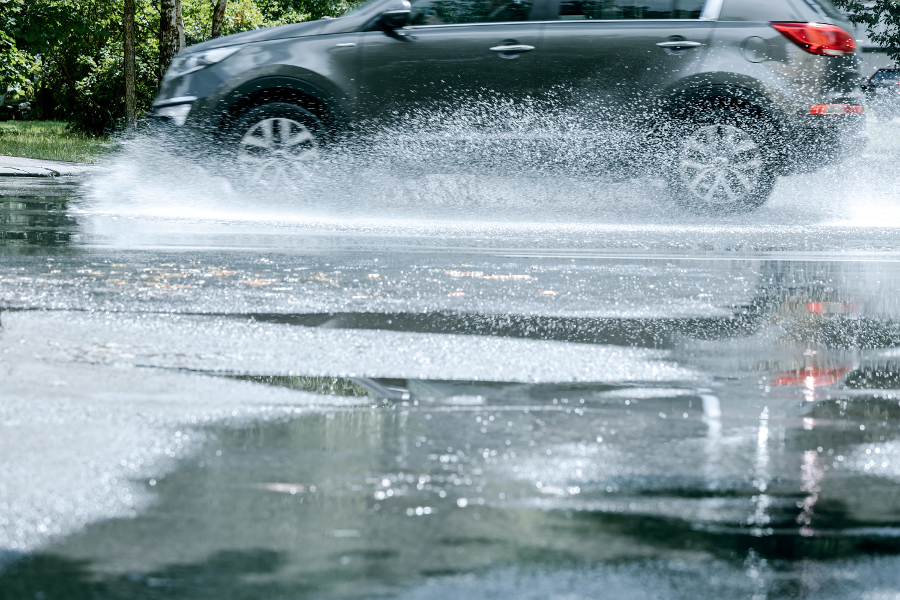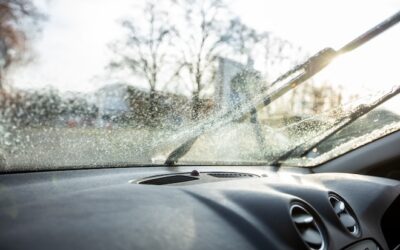Sudden showers and prolonged downpours can occur throughout the year, so driving in the rain is a skill that all new drivers have to acquire, and fast.

Driving in the Rain – Essential Tips
- Wet surfaces can almost double your stopping distance, so slow down and take it easy
- Keep your air conditioning on to prevent your windows from steaming up
- Use dipped headlights to help other drivers see you, but don’t use rear fog lights, as these can dazzle other drivers
- Don’t spray other drivers, and if you find yourself sprayed by another fast-moving vehicle, stay calm and speed up your wipers to clear your windscreen
Make Sure Your Car’s Ready for Driving in the Rain
When it comes to routine inspections and servicing, never overlook your wipers. They need to be clean and in full working order. If they’re scraping across your windshield, or if they’re missing some areas in their sweep, you’ll need to replace them as soon as possible.
Similarly, get into the habit of routinely topping up your screen wash, and keep some spare in your car at all times. That way, you can top yourself up even if you run out in the middle of a journey.
Make sure your tyres are pumped to the right pressure and that your treads are in a healthy state. Insert a 20p piece into one of the treads. If the outer band of the coin is completely covered, then your tyre treads are of the legally required depth. If your tyres fail this 20p test, get them replaced as soon as you can.
Driving Through Water – Coping With Aquaplaning
Whether it’s a puddle or a particularly wet road, you should never drive fast through standing water. Not only will this create a big splash and lots of spray – which can be hazardous for other road users – it can also damage your car’s engine, underside and electrics.
Driving through standing water can also cause you to aquaplane. You don’t even have to be driving too fast – aquaplaning can occur at speeds as low as 35mph.
Most incidents of aquaplaning last just a few seconds. But in more extreme cases, you may find that your steering’s stopped working, that you’ve lost all grip, and that applying the brakes causes you to skid.
If you start to aquaplane, don’t panic, and don’t slam on the brakes. You need to reduce your speed gently so you can regain control of your steering. So instead of hitting the brakes, slowly ease your foot off the accelerator. If you need to correct your direction, do so gradually, with small movements and while dipping the clutch at the same time.
Should You Use Cruise Control in the Rain?
In short: No; for the simple reason that cruise control can make instances of aquaplaning significantly worse.
Cruise control will keep your car at a constant speed, which is why it’s great for long journeys and motorways. But as we just said, recovering from aquaplaning requires reducing your speed slowly and gradually.
So if you start to aquaplane while cruise control’s engaged, you may start to skid out of control, and you’ll struggle to regain control.
So when driving in the rain, drop your speed and turn that cruise control off.
Learning to Drive in the Rain
Like most aspects of driving, the only way to really prepare yourself for driving in drizzles and downpours is to get lots of practice in.
If you’re just learning to drive, it’s likely that some of your lessons will take place on rainy days. This is Britain, after all! But even so, you should ask your instructor for some hints and tips for staying safe on the roads in wet conditions.
And make sure you get yourself some learner driver insurance, to cover yourself in the event of an incident.



